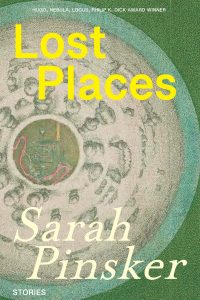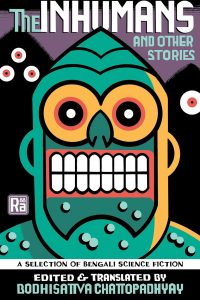Lois Tilton’s 2010 Short Fiction Reviews in Review
Last year at about this time, at another site far, far away, I was looking back over the short fiction from the year 2009. Now, once again reviewing the year’s crop of stories, what I see is a fairly stable field in both print and electronic periodical media. One major outlet was lost: Jim Baen’s Universe. Realms of Fantasy continued to give us stories as its teeter on the edge was again prolonged at the last minute. A couple of new ezines specializing in science fiction started up: Lightspeed and Redstone. Some new printzines. In the universe of SF periodical publishing, this is the usual rate of evolution at work.
When it comes to finding to good stories, I’ve found very little change this year, whether in print and online, science fiction or fantasy. The same periodicals perennially seem to provide the best reading. So here is my summary of the best fiction from 2010. I’m starting with the printzines for no better reason than seniority.
Asimov’s is printing science fiction almost exclusively these days, and adding more hard SF and space fiction into the mix. There were good stories here from some very familiar names, most notably “A History of Terraforming” by Robert Reed. The magazine also had good work from Alexander Jablokov, “Blind Cat Dance, Geoff Landis, “The Sultan of the Clouds” and Steve Rasnic Tem, “A Letter from the Emperor.”
Analog was expectably Analogish, but I was happy to find few really clumsily written pieces or didactic political screeds in this year’s issues. My favorite stories were “Eight Miles” by Sean McMullen and “At Last the Sun” by Richard Foss.
F&SF remains one of the most diverse publications in the field, with a mix ranging from mundane science fiction to horror. It provided more stories that ended up on this list than any other publication, but I wish there hadn’t also been so many silly stories of little merit. At the top are a couple of novellas: Robert Reed’s fine “Dead Man’s Run” and Paul Park’s mysterious “Ghosts Doing the Orange Dance.” I also liked “Blue Fire” by Bruce McAllister, “Eating at the End-of-the-World Café” by Dale Bailey, “Adventures in Modern Chemotherapy” by Michael Alexander, “A History of Cadmium” by Elizabeth Bourne, “How Seosiris Lost the Favor of the King” by James L Cambias, and “Dr. Death and the Vampire” by Aaron Schultz.
Realms of Fantasy kept up its standards through a shift in publishers, and I’m sure readers are hoping it will be able to survive another. For 2010, I especially liked “Queen of the Kanguellas” by Scott Dalrymple.
Interzone remains just about my favorite source of science fiction. I often wish some of the older, more tired printzines could get an infusion of its energy, with its strongly imagined, often dark futures. My picks this year, however, were a quiet fabulist work by Mario Milosevic, “The Untied States of America,” and a crazy piece of historical SF by Paul Evanby: “Mannikin.”
Black Gate put out only a single issue this year but made up for it in the sheer mass of sword and sorcery and other adventure fantasy. The quality was high; I’m happy to see this zine has given up its excessive attachment to endless story series. My favorite was “The Word of Azrael” by Mathew David Surridge, possibly the ultimate sendup of sword and sorcery.
Clarkesworld has changed since its early days, and I rather miss the hard-edged, experimental stuff that used to be featured, but it’s still one of my favorite electronic periodicals. The question now is what the future will bring with the departure of Sean Wallace as editor.
High on my list are “Between Two Dragons” by Yoon Ha Lee and “Thirteen Ways of Looking at Space/Time” by Catherynne M Valente. I also liked Nina Kiriki Hoffman’s “Futures in the Memories Market” and “The Association of the Dead” by Rahul Kanakia.
Fantasy Magazine is undergoing even more drastic changes as publisher Sean Wallace kicks himself out of the editorial chair, and I can’t say this bodes well for this ezine that has been at the top of my list as a source of short fantasy. For one thing, the amount of original fiction will apparently be cut in half.
Some of my favorites of 2010 were “The Interior of Mister Bumbleshoot’s Coat” by Willow Fagan, “Bearing Fruit” by Nikki Alfar and “The Seal of Sulaymaan” by Tracy Canfield.
Beneath Ceaseless Skies has established itself while backing off somewhat from the “literary adventure” premise just as Fantasy minimized the more experimental aspects of “literary” fantasy, with the result that the two zines spent the year publishing rather similar stuff and sometimes the same authors.
I especially liked Kris Millering’s elegant “The Isthmus Variation.” Other favorites were by Yoon Ha Lee: “The Territorialist,” T F Davenport: “The Motor, the Mirror, the Mind,” James Lecky: “And Other Such Delights.”
Strange Horizons, now on its second decade, is one of the oldest surviving ezines. My picks are the dystopian “The Bright and Shining Parasites of Guiyu” by Grady Hendrix, “Small Burdens” by Paul M Berger, and “The Night Train” by Lavie Tidhar.
Apex came back from perhaps the shortest hiatus on record and also acquired a new editor, Catherynne Valente. Things look promising after stories like Peter M Ball’s “L’esprit de L’escalier,” Ian Tregellis’s “Still Life (A Sexagesimal Fairy Tale),” and Amal El-Mohtar’s “The Green Book.” This may become the go-to zine for literary fantasy in the future.
Lightspeed debuted this year as the science fiction sibling of Fantasy, though its SF tends to be of the sort indistinguishable from magic instead of the Hard Stuff. While I don’t believe it has established its own place within the genre, it gave us some good stories by Catherynne M Valente, “How to Become a Mars Overlord,” and “Flower, Mercy, Needle Chain” by Yoon Ha Lee.
Albedo One only had one issue that I saw this year, but it contained the sensuous “The Nature of Bees” from Priya Sharma.
Intergalactic Medicine Show is one magazine that I didn’t read throughout the entire year; the best story I saw there was from Peter S Beagle: “Trinity County, CA.”
Electric Velocipede had a good story in “Daughters of Fortune” by Cyril Simsa
Tor.com last year appeared to be on its way to becoming a strong online source for superior genre fiction. This year, not so much. The site can’t seem to decide whether it wants to publish original fiction or promotional materials like novel excerpts, outtakes and tie-ins to longer works. Still, there was some good stuff posted here, most notably Bruce McAllister’s “The Courtship of the Queen.” Also “Four Horsemen, at Their Leisure” by Richard Parks, and “What Doctor Gottlieb Saw” by Ian Tregillis.
Subterranean, on the other hand, seems to know exactly what its online magazine is for: to pull readers to the publisher’s website with fiction from its featured authors. As these authors tend to be some of the genre’s most prominent stars, it’s no surprise when the stories are good ones, such as “Under the Moons of Venus” by Damien Broderick, “Second Journey of the Magus” by Ian R MacLeod, “Brownian Emotion” by Tom Holt, and “Amor Vincit Omnia” by K J Parker.
There are relatively few stories from anthologies on my list for the year, and only a single stand-alone novella, because I received only a small number of these for review.*
There were several good stories out of the many in the Postscripts 22/23 book: The Company He Keeps. My favorites were Joel Lane’s “Never Always Comes,” James Cooper’s “The Farmer’s Wife,” and Gregory Norminton’s “The Time Traveller’s Breakdown.”
Of the dark fantasy in Haunted Legends, I especially liked “Tin Cans” by Ekaterina Sedia and “Down Atsion Road” by Jeffrey Ford.
The “Fermi Paradox” anthology Is Anybody Out There? had David Langford’s neat “Graffiti in the Library of Babel.”
From the small press Panverse 2, I liked “The Curious Adventure of the Jersey Devil” by Michael D Winkle.
Songs of Love and Death had the excellent “Under/Above the Water” by Tanith Lee.
From the all-novella collection Godlike Machines I picked “A Glimpse of the Marvellous Structure (And the Threat it Entails)” by Sean Williams.
I only received one chapbook novella during the last year, and it was one I recommend: Gregory Feeley’s Kentauros.
—
* I would like to read more anthologies and novellas in 2011. Copies should be sent to the address below. Please note that materials sent to the Locus address will not reach me.









Pingback:Tweets that mention Locus Online Reviews » Lois Tilton’s 2010 Short Fiction Reviews in Review -- Topsy.com
Pingback:Locus like “Untied States of America” |
Pingback:Science Fiction
Thank you for singling out those stories from F&SF.
Please note that the title of Michael Alexander’s story is “Advances” not “Adventures.” (I almost made the same error on the contract for the story.)
—Gordon V.G.
[sigh] Title-impairment strikes again! I believe this is a sibling dysfunction to name-impairment.
Pingback:Lois Tilton’s 2010 Short Fiction Reviews in Review « Jim Steel's Cave of Doom
Pingback:Black Gate » Blog Archive » She Likes Us…
Pingback:Wrapping Up Wrap-up Season: I’m Moving To California…also, I read alot of books « Blotter Paper
Thanks for recognizing at least one story in my co-edited anthology Is Anybody Out There? Six of the stories, including Langford’s “Graffiti in the Library of Babel,” are posted in their entirety on my blog More Red Ink. Enjoy!
Cheers,
Marty Halpern